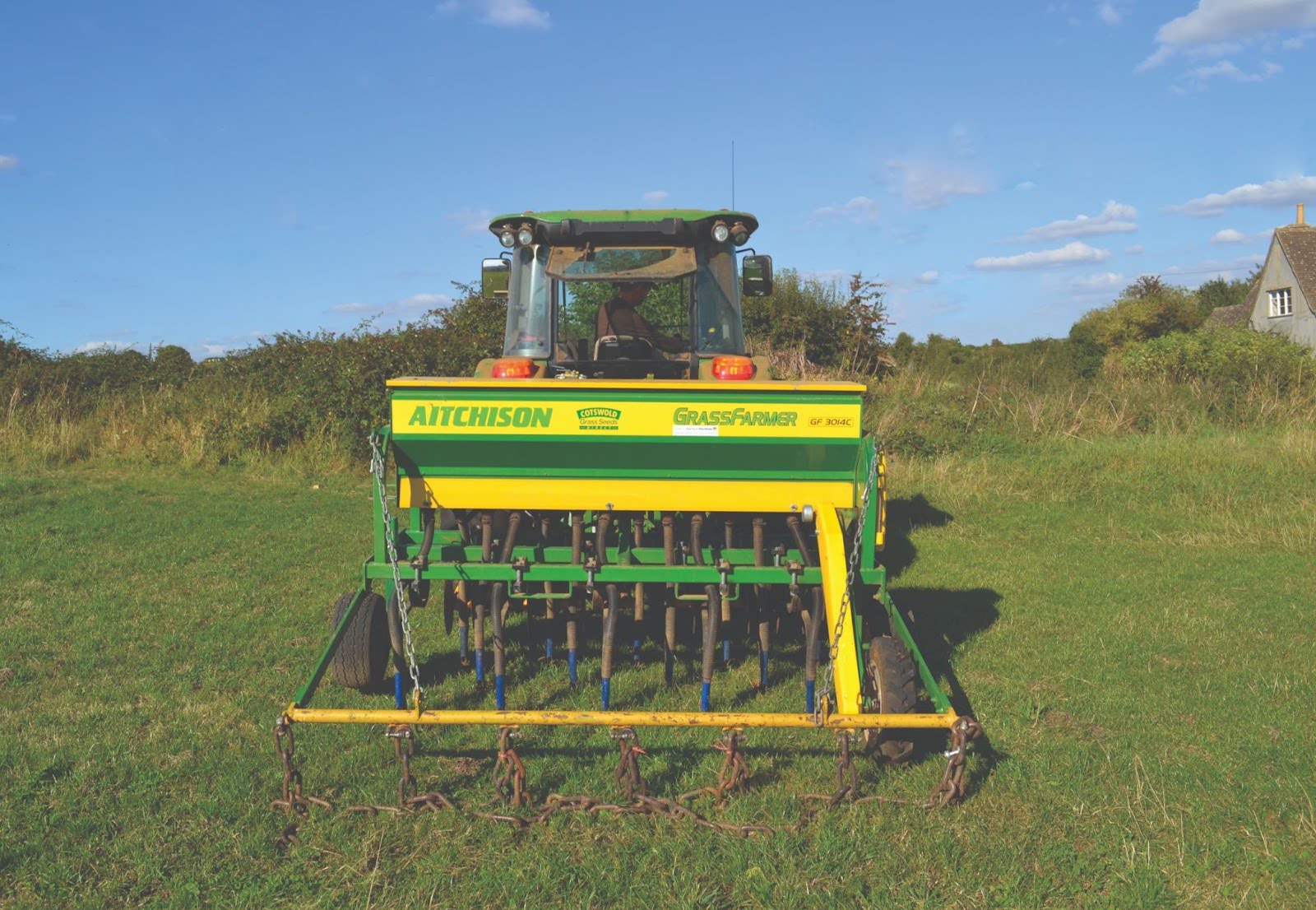What
Overseeding is the process of adding to an existing ley, to improve worn out or damaged leys, or patching up a recent sowing which has not taken well.
Why
Overseeding is quicker and lower risk, where the existing pasture is retained and improved without a loss of forage or production. It is also cheaper, with a sowing rate generally ¾ of a total reseed sowing rate. Pastures gain another few years out of a ley before requiring a full reseed. Overseeding is useful where a full reseed can be challenging in the unpredictable spring conditions, such as on waterlogged, clay or sloping ground.
Not all grasses/legumes are suitable for overseeding; choose vigorous strains such as the longer term grass overseed (MIXOSL), which contains tetraploid hybrid and perennial grasses, which are quick establishing and can withstand competition. Similarly, white clover overseeds perform well due to their fast production and crawling growth habit. The long term white clover overseed (MIXOSC) combines medium and small varieties adding valuable protein into grazing sheep or cattle diets.
Herbal overseed (MIXHOS) for lighter land, or MIXHSOS for heavier land) still contains the deep rooting mineral mining herbs and nitrogen fixing legumes of the traditional herbal ley reseeds, but with the grasses removed to avoid the established ley becoming overrun with grass and the legumes/herbs being smothered.
When
Timing of an overseed is very dependent on the components of the mixture; grass overseeds require a soil temperature of 5-7°C, whereas legumes require a soil temperature of 7-8°C.
Therefore, ideally overseed during early to mid spring. Late spring into early summer sowings should be avoided as they coincide with the main burst of grass growth in the existing pasture. Try and pick a time when rain is forecast to ensure germination.
How
Preparation
It is a misconception that an over-seed does not require any work! Preparation is absolutely key for a good establishment.
It is important that the existing sward is opened up, so that at least 50% is showing bare soil, in order to reduce competition and allow for adequate seed-to-soil contact. This can be achieved by grazing hard by stock and passing over the sward several times with a chain or comb harrow (the latter is best for opening up very matted swards). Harrowing also repairs winter poaching damage, removes dead material and aerates the soil.
If you're overseeding a mixture containing legumes or herbs, ensure that broadleaf weeds (such as docks, thistles and nettles) are controlled before sowing.
Sowing guidance
Ideally broadcast overseed mixtures to ensure a quick emergence, following with a harrow to help work the seed into the soil. Be wary of sowing seeds too deeply with direct drills; clovers and small seeds require a sowing depth of only 1cm.
Management
Weather permitting, after sowing, roll the area or use livestock to lock in moisture and maximise soil contact (this also reduces the risk of bird damage). Livestock are also beneficial to keeping the existing sward grazed down for the first five days after sowing (remove before germination to protect emerging seedlings). Sheep are the best stock to use as they have a light tread and shouldn’t end up poaching the ground.
Carry out the ‘pluck/rip test’ before reintroducing livestock to the paddock. This test can usually be done after 6-8 weeks. If you are easily able to pull out the seedings, allow further time to establish a stronger root anchorage.
Cut or graze livestock only lightly to encourage tillering, then remove/rest for at least 2-3 weeks to allow recovery before resuming normal grazing. Beware that horses and sheep graze very close to the ground so should be managed to avoid damaging newly established seedlings.
Do not apply fertiliser to overseeded pastures for at least six weeks after sowing; applying fertiliser encourages rapid growth of the existing sward, risking smothering out the newly germinating seedlings.

https://www.cotswoldseeds.com/seeds/4/over-seeding
https://www.cotswoldseeds.com/products/876/ryegrass-over-seeding-longer-term-4-5-years
https://www.cotswoldseeds.com/products/1038/ryegrass-and-clover-over-seeding-longer-term-4-5-years
https://www.cotswoldseeds.com/products/29/ryegrass-over-seeding-short-term-2-3-years
https://www.cotswoldseeds.com/products/30/white-clover-over-seeding-long-term-grazing